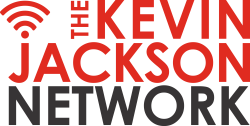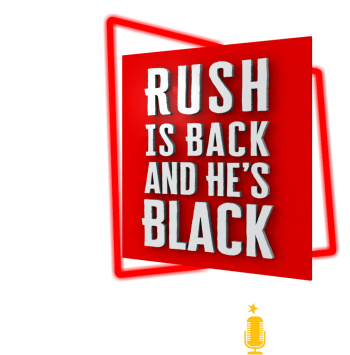
The Psychological Heist of Everyday Life
I know you likely think you’re immune to advertising. You’re a conscious, rational actor in the marketplace of life, a paragon of informed choice. Sure. And I’m the secret inventor of the Pet Rock. The uncomfortable, hilarious truth is that the most brilliant marketing of the last half-century doesn’t operate like a persuasive salesman; it functions as a masterful psychological heist. It doesn’t bother knocking on the front door of your logic because it knows the locks are cheap. Instead, it picks the backdoor of your subconscious, rearranges the furniture, leaves a catchy little earworm playing on a loop in your head, and is halfway to the Bahamas with your wallet before you even notice the couch is facing the wrong way.
This isn’t about moving product. It’s about colonial expansion for cranial real estate. It’s the art of creating a meme, a phrase, or a feeling so culturally contagious that it breaks out of its 30-second prison cell and infects the entire water supply. We are living in a world built by these heists, and the most fascinating bit of hypocrisy is that we not only sing the songs of our captors—we pay a premium for the sheet music.
As you reminisce about some of the marketing that sucked you in, ask yourself if you’ve been taken in by Leftism. A bit more “woke” today than you were a decade ago? Maybe you’ve been convinced that illegals are better workers, hell citizens of America? Did you get the vaccine?
The 80s: From Feel-Good to Feel-Superior
The 1980s marked a tectonic shift in the psychological landscape of selling. The warm, fuzzy, sing-song jingles of the previous era—the ones that promised to teach the world to sing in perfect harmony—were deemed insufficient for a new, brash, and brutally competitive consumer culture. The goal was no longer to be your friend; it was to be your coach, your drill sergeant, or your snarky confidant. Marketing stopped asking and started demanding. This was the decade that weaponized the catchphrase.
Consider Nike’s “Just Do It.” Launched in 1988, this was not a suggestion. It was a three-word manifesto fired directly into the cortex of a generation. It was a command that preyed elegantly on universal procrastination, laziness, and self-doubt. It didn’t bother with specs about air soles or waffle outsoles; it sold the visceral idea of a better, more disciplined, and ultimately more admired version of you. The genius was in its ambiguity. It applied to athletics, to your career, to finally cleaning the gutters. The result? In the decade following its launch, Nike’s share of the North American sport-shoe market exploded from 18% to 43%, and sales skyrocketed from $750 million to over $9 billion. They didn’t sell shoes; they sold a commandment.
Then there was Wendy’s legendary “Where’s the Beef?” campaign. This 1984 masterpiece, starring the octogenarian Clara Peller, was not an advertisement; it was a public shaming masquerading as fast-food commerce. It wasn’t about how good Wendy’s hamburger was, but about how pathetic, bun-heavy, and fundamentally lacking everyone else’s was. It tapped into a deep-seated consumer skepticism—the feeling that you’re being ripped off with more fluff than stuff—and packaged it with impeccable comedic timing. The phrase didn’t just sell hamburgers; it became a cultural shorthand for demanding substance, used everywhere from schoolyards to the 1984 Democratic primary debates by candidate Walter Mondale. Wendy’s saw a 31% sales increase that year. They profited not from hunger, but from shared indignation.
The average cost of a 30-second Super Bowl ad in 1995 was $1 million. By 2024, it was $7 million. This insane inflation is driven purely by the fact that the ads themselves became the event, with viewership polls and watercooler talk the next day.
The 90s: Absurdity as the New Authority
If the 80s yelled at you, the 90s decided to weird you out. Marketers realized that a generation raised on cable television was becoming adept at tuning out traditional hard sells. The solution? Stop trying to make sense. Embrace the absurd. The goal was no longer to command your respect but to hijack your attention with sheer, unadulterated silliness.
The undisputed kings of this were Anheuser-Busch, not with chiseled athletes, but with… amphibians. The Bud-weis-er frogs, which croaked the brand name in a simple, tri-tonal rhythm, were a stroke of idiot genius. They were meaningless. They were absurd. And they were utterly unforgettable. The campaign, which launched in 1995, wasn’t about the quality of the water or the hops; it was about branding a feeling of cool, detached irony. In the two years following their debut, Budweiser saw a huge increase in brand awareness among young adults, and sales, which had been flat, began to rise. They made a classic, dad-beer brand feel hip by saying absolutely nothing of substance. It was marketing as a Zen koan.
This era also perfected the art of “lifestyle branding.” The “Got Milk?” campaign, created by the California Milk Processor Board in 1993, is a masterclass in this. The ads never claimed milk was delicious or even particularly healthy. Instead, they created a sense of panic and tragic lack. They presented scenarios where people were moments away from enjoying a perfect cookie or brownie, only to be rendered incomplete and miserable by the absence of milk. It sold milk not as a beverage, but as the critical missing component to happiness itself. It was problem-solving by inventing the problem first.
The 2000s: The “Whassup” of Virality and Reality Hacking
The dawn of the internet age brought a new frontier: virality. This was the wild west, where a single idea could achieve global penetration not through a massive media buy, but through the organic, unpredictable sharing of the masses. The campaigns that worked were those that felt like they came from the culture, not from a boardroom.
The pinnacle of this was Budweiser’s “Whassup?” campaign. Beginning in 1999, it was a bizarre, low-fi clip of friends greeting each other with the exaggerated phrase. It wasn’t an ad; it was a social script. It was a performance you did with your own friends, making you an unpaid, enthusiastic brand ambassador. The campaign became one of the most awarded in history, and in the year following its launch, Budweiser’s sales increased by over $1 billion. It was a perfect virus: contagious, simple, and it made the host do all the work.
But the most audacious heist of all was pulled off by a tiny indie film. “The Blair Witch Project” (1999) didn’t just advertise; it hacked reality. With a primitive website, fake police reports, and missing person posters at film festivals, the creators presented a work of fiction as terrifying fact. The marketing budget was a mere $1 million (a pittance even then), but it generated a tsunami of free media coverage that convinced audiences the “found footage” was real. The film, made for $60,000, went on to gross nearly $250 million worldwide. They didn’t sell a movie ticket; they sold a myth, and we bought it wholesale. It was the ultimate proof that the most powerful thing you can market is a belief.
The 2010s and Beyond: The Invisible, Insidious, and Intelligent Ad
We have now entered the era of the invisible ad. The most powerful marketing doesn’t feel like marketing at all. It feels like a meme you discovered yourself, a personalized message, or even a public service announcement.
Look at Old Spice. Their “The Man Your Man Could Smell Like” campaign exploded in 2010 not just for its surreal humor, but for its real-time, personalized video responses on social media. Over two days, they produced over 180 videos directly responding to tweets and comments. This generated 1.4 billion impressions and increased sales by 107%. It was no longer a monologue; it was a bizarre, intoxicating conversation.
Or consider Dollar Shave Club. Their 2012 launch video, featuring the founder walking through a warehouse delivering lines like “Our blades are f***ing great,” was crude, hilarious, and brutally direct. It cost $4,500 to make. It garnered over 12,000 orders in the first 48 hours and was the cornerstone of a business eventually acquired by Unilever for $1 billion. It worked because it felt like an anti-ad—a rejection of corporate gloss that built a brand on authenticity, or at least a very convincing facsimile thereof.
And perhaps the most ironic twist: the ad that literally saved lives by being irresistible. Metro Trains Melbourne’s “Dumb Ways to Die” (2012) was a lethally cute public service announcement about train safety. With a catchy, darkly hilarious song and animation, it became a viral music video and a top-selling game. Most importantly, it reportedly led to a 21% reduction in accidents and deaths on their network in the following year. They used the tools of the psychological heist—catchiness, humor, and shareability—to actually protect people. The ultimate hypocrisy: using the power of manipulation for good.
The Journey Never Ends
We’ve journeyed from commands yelled at us (“Just Do It”), to absurdity confusing us (Budweiser Frogs), to reality being hacked around us (Blair Witch), and finally to the ads becoming so personalized and useful they feel like they are us. The biggest irony isn’t that we’re being manipulated—it’s that we now demand the manipulation be so clever, so entertaining, and so seamlessly integrated into our lives that we don’t even complain when it picks our pocket.
That’s how Madison Avenue tactics found their way into politics. Now, everything we see is marketing. Hopefully we’ve helped you feel like you got a peek behind the curtain.



